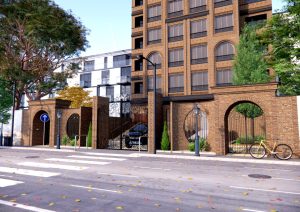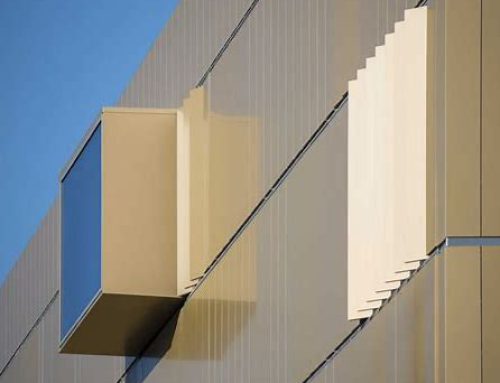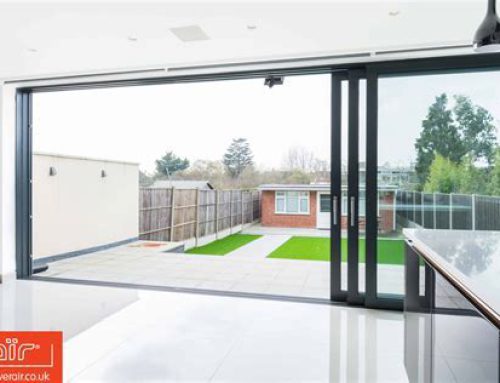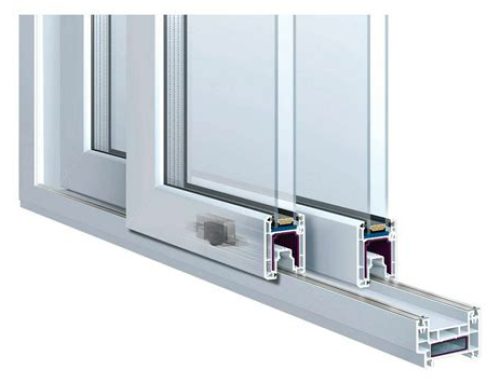Curtain wall construction details design guide

Introduction
Curtain walls have become an integral part of modern architectural design, providing aesthetically appealing facades while also offering numerous functional benefits. A curtain wall is an external building envelope that does not carry the load of the building itself but rather transfers its load to the building’s structural framework. In this article, we will delve into the essential design considerations and construction details that architects and engineers must keep in mind when designing curtain walls.
-
Material Selection
The first step in curtain wall design is selecting appropriate materials. Commonly used materials include aluminum, glass, steel, and composite panels. Each material has its advantages and limitations, such as thermal conductivity, structural strength, and cost. An optimal balance between aesthetics, performance, and budget must be achieved during the selection process.
-
Structural Analysis
Before finalizing the curtain wall design, a thorough structural analysis is necessary. Engineers need to assess the loads the curtain wall will bear, including wind, dead, live, and seismic loads. The analysis will ensure that the chosen materials and structural elements can withstand the forces acting upon the curtain wall during its lifetime.
-
Water and Air Tightness
A primary function of a curtain wall is to protect the building interior from the elements, including water and air infiltration. Therefore, designing a watertight and airtight system is crucial. Special attention must be given to the joints between the panels and the connections with the building structure to prevent leakage and air seepage.
-
Thermal Performance
Curtain walls can significantly impact a building’s energy efficiency. To improve thermal performance, architects should consider incorporating energy-efficient glazing, thermal breaks, and insulation within the curtain wall system. Properly designed thermal breaks will reduce heat transfer and the risk of condensation, thereby enhancing the overall sustainability of the building.
-
Acoustic Considerations
In urban environments, noise pollution can be a significant concern. The curtain wall design should incorporate appropriate acoustic elements to minimize noise transmission through the facade. The choice of glazing and insulation materials can have a considerable impact on noise reduction.
-
Fire Safety
Ensuring fire safety is paramount in any building design. Curtain walls must be designed to restrict the spread of fire and smoke. Fire-resistant glazing and fire-rated materials should be used in areas where fire safety regulations dictate.
-
Movement and Expansion Joints
Buildings are subject to movements due to temperature changes, wind forces, and settling. These movements can cause stress on the curtain wall system, leading to cracks or failures. Properly placed movement and expansion joints allow the curtain wall to accommodate these movements without compromising its integrity.
-
Installation and Maintenance
Efficient installation methods are essential to ensure the curtain wall system is assembled accurately and securely. Regular maintenance is also crucial to prolong the life of the curtain wall and prevent issues such as water leakage, sealant failure, and glass damage.
-
Building Codes and Standards
Designing a curtain wall involves complying with various building codes and standards. Architects and engineers must stay up-to-date with the latest regulations to ensure the safety and legality of their designs.
-
Sustainable Design
In the era of increasing environmental awareness, sustainable design practices are becoming more critical than ever. Integrating sustainable features into curtain wall design can significantly contribute to a building’s overall green credentials. For instance, using recyclable materials, employing daylight harvesting techniques through strategic glazing placement, and incorporating photovoltaic panels within the curtain wall can all enhance a building’s energy efficiency and reduce its carbon footprint.
-
Blast Resistance (Optional)
In some specific contexts, such as high-security buildings or those located in vulnerable areas, blast resistance might be a design requirement. In such cases, engineers must consider the impact of an explosion on the curtain wall and its potential to withstand or dissipate the forces generated. Special materials and construction techniques can be employed to improve blast resistance while maintaining other essential functions of the curtain wall.
-
Aesthetics and Customization
Curtain walls offer tremendous design flexibility, allowing architects to create unique and visually appealing facades. From color and texture variations to custom panel shapes, designers can tailor the curtain wall to fit the specific architectural style and vision of the building. Collaboration between architects, engineers, and curtain wall manufacturers is crucial to ensuring the successful realization of these custom designs.
-
Testing and Mock-ups
Before implementing a curtain wall design on a large scale, it is essential to conduct rigorous testing and create mock-ups. Testing helps validate the system’s performance under different conditions and ensures it meets the necessary standards for water penetration, air infiltration, and structural integrity. Mock-ups allow designers to visualize the final product and make any necessary adjustments before the actual construction begins.
-
Collaboration and Communication
Effective communication and collaboration between all stakeholders in the curtain wall design process are essential. Architects, engineers, contractors, and manufacturers must work together seamlessly to ensure the design intent is accurately translated into the final construction. Regular meetings and open channels of communication will help resolve any potential issues promptly.
-
Life Cycle Considerations
Curtain walls, like any building component, have a finite lifespan. Designers should consider the long-term maintenance and potential need for replacement during the planning stage. Opting for high-quality, durable materials and incorporating easy-to-maintain features can prolong the curtain wall’s life and minimize future replacement costs.
Conclusion

Designing a curtain wall involves a delicate balance between aesthetics, functionality, and sustainability. Careful consideration of material selection, structural analysis, thermal performance, water and air tightness, acoustic considerations, fire safety, movement joints, installation, and compliance with building codes ensures a successful curtain wall system.
By embracing sustainable design principles, acknowledging the importance of collaboration, and continuously innovating in materials and technology, architects and engineers can create curtain walls that not only enhance the appearance of buildings but also contribute to the overall well-being of their occupants and the surrounding environment. As this construction technique continues to evolve, the future holds exciting possibilities for even more sophisticated and efficient curtain wall designs.






Leave A Comment